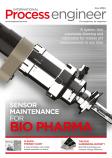Arnold Taddeo discusses the benefits of digitalisation for industrial variable speed drives
The benefits of digitalisation are clear across society, especially in consumer-facing technology. By contrast, traditional industrial machinery has not evolved quite as quickly, and many facilities still use technology that is firmly rooted in the 20th century.
This doesn’t need to be the case. It’s easier than ever before to harness the power of automation, interconnectivity and data. Digital solutions for industrial machinery can deliver significant boosts to a company’s agility and cost-effectiveness.
Save money, save the planet
As electricity prices rise and there is increasing pressure on organisations of all types to limit emissions, increasing energy efficiency is key. When it comes to improving a facility’s efficiency, hardware is a natural place to start. Variable speed drive (VSD) technology enables operators to control the speed and torque of a motor according to the specific requirements of the process, reducing energy consumption. In combination with higher efficiency classes of motors (such as IE4 and IE5) VSDs easily deliver double-digit improvements in energy savings.
These hardware improvements typically pay for themselves in one to two years, but with the high price of electricity, payback periods have dropped to months. Fortunately, many light industrial businesses and utilities have already embraced the potential of more efficient hardware. However, to take energy efficiency to another level, it’s time for industry to embrace digitalisation.
Here's why: digitally connected drives can transmit valuable data from the motor and driven machine, showing exactly how much energy is being used. In turn, operators can analyse this data, identify potential inefficiencies and take swift action to address them. Real time adjustments can be made to ensure the optimum amount of energy is always used while maintaining process quality and reliability.
Smarter equipment, better decisions
Increasingly, digital connectivity is built into industrial hardware. For example, ABB drives can come pre-equipped with plug-and-play, secure connectivity. This enables users to connect to remote technical support and monitoring services, helping them to operate equipment more efficiently.
Better data enables better decision making and lower costs. For example, a digitally enhanced drive sends comprehensive data on equipment performance and health, accessible from a web portal.
With this information, operators can identify issues early, perform diagnostics, and schedule maintenance. Every minute of downtime is extremely expensive, so investing in these solutions is an obvious choice. Adopting a data-driven approach also means that a facility can cut costs on routine, non-critical service visits and potentially extend service intervals.
Dispelling digitalisation myths
Some operators are concerned by the idea that digitalised equipment is vulnerable to unauthorised access via the cloud. Fortunately, modern cloud-based solutions can deliver superior cybersecurity standards to protect critical systems. Facilities can safely send and receive information – such as parameter backups and troubleshooting support packages – over a cloud connection without worrying about bad actors.
Another common misconception is that connecting devices to the IoT is a complex routine and requires a high level of technical expertise. This is no longer true: connecting modern equipment to the IoT is often “plug and play” nowadays. Operators can quickly digitalise without the need for an external specialist, and they can use the full range of features without lengthy training.
In fact, some modern solutions are just as easy to use as smartphone apps. For example, ABB's technical remote support service offers chats, image sharing and backups, online viewing of parameters, and more, all via a mobile app. This makes the technical support process faster and more efficient.
Digitalisation in action
Operators at the Italian water company CAFC have traditionally carried out periodic checks and maintenance intervention at every plant – including those in remote, difficult to access regions. The operator was looking to cut costs and streamline maintenance, so it installed ABB ACQ580 drives.
These drives include a plug-and-play cellular connection built into the control panel, and securely send data to the cloud. Whereas the maintenance team previously needed to travel the country to check each plant’s performance, they can now do it remotely using a web platform.
The nationwide team now plan maintenance ahead of time so that they can purchase services and parts at the most competitive prices. They are also able to perform maintenance based on actual condition rather than by a predetermined, time-based schedule. In-person site visits still occur, but far less frequently. This has driven down maintenance planning costs and improved equipment reliability and plant availability.
The next step for industry
Investing in best-in-class machinery is a natural first step for industries looking to boost performance, but digitalisation is the real key to unlocking further cost reductions, maximising energy efficiency and making smarter, data-driven business decisions.
Arnold Taddeo is global head of product management at ABB


















